I’m a millennial. I’ve been uploading content since the early days of internet video.
After starting 6+ YouTube channels and experimenting with a variety of editing formats, I finally started making money in 2016. Not enough to make a living. But a reasonable side income.
This article is meant to help you understand how much money you can earn with your YouTube content. My goal is to arm you with enough knowledge so you can decide whether YouTube is the best platform to help you meet your revenue goals.
My channel’s performance metrics
Today, we’re focusing on one YouTube channel called Jam Campus. Launched in 2015, this channel contains K-12 educational music videos about history and science.
The channel’s goal is to spark curiosity for learning by providing fun, introductory content for kids.
Here are some high-level channel stats, as of Feb 2022:
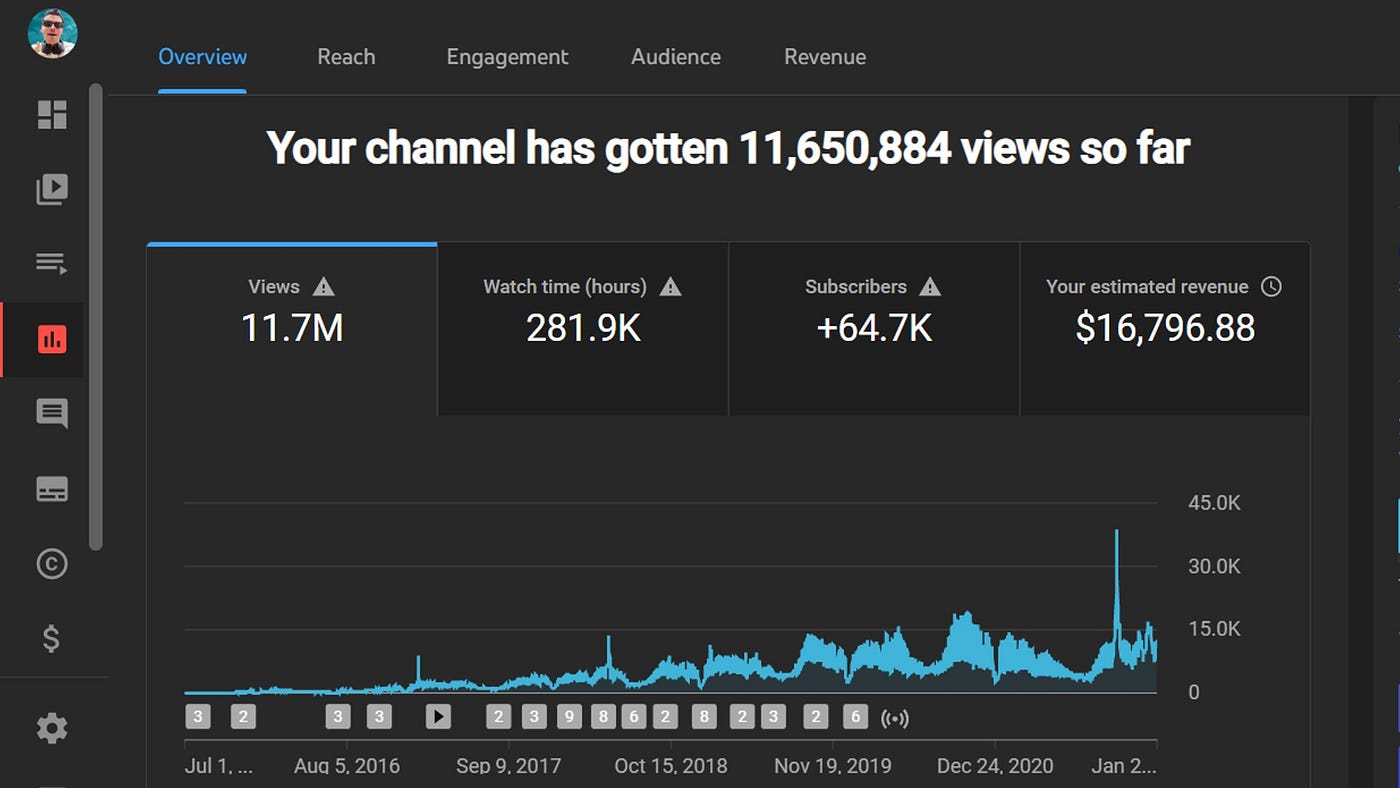
- Total Video Uploads: 65
- Subscribers: 64,700
- Total Views: 11,650,885
- Total Watch Hours: 281,900
- Average View Duration: 1-min, 32 seconds
- Total estimate revenue (lifetime): $16,796.88
Also good to know: this channel has been running passively since 2019. AKA, I’ve blatantly ignored it for the past three years. Most of the videos were uploaded between 2017 and 2019. No new videos have been added since then.
This note is important because running a YouTube channel passively is NOT the ideal what to make money. The algorithm favors consistent uploads and frequent follower engagement. If you’re serious about making money, don’t do what I did.
But even with three years of severe neglect, YouTube still provides me with a monthly revenue drip.
How much money does YouTube pay monthly?
On average, I make $570.50 USD per month. Not life-changing money. I’m definitely keeping my day job. But for zero hours of current work, I’ll take it.
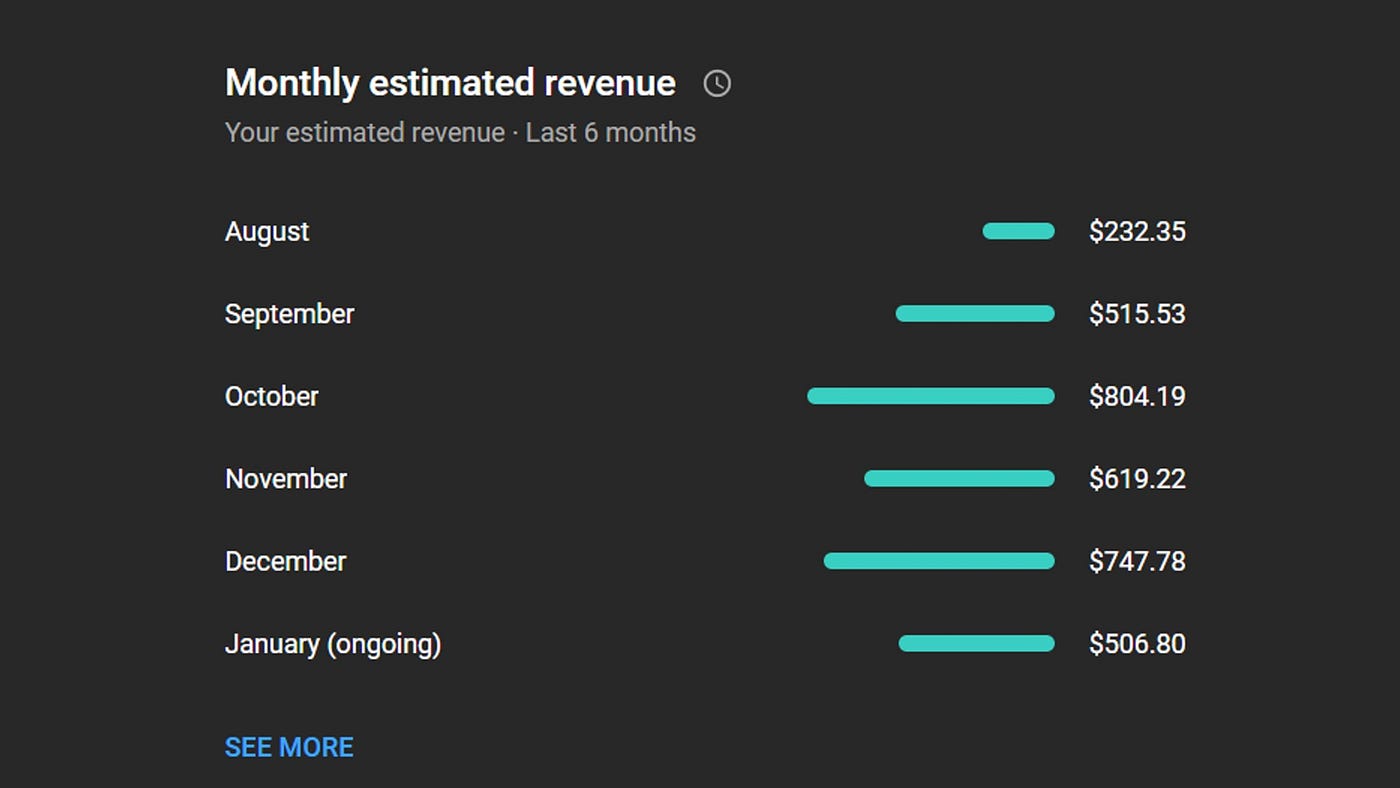
Here are some more stats:
- Lifetime revenue: $16,796.88
- Average monthly revenue: $570.50
- RPM (revenue earned per 1,000 views): $1.44
- Playback-based CPM (cost advertisers paid per 1,000 views): $4.67
Note that 100% of my revenue came from advertising dollars. Advertising is typically the biggest cash cow for YouTube creators.
But nowadays, YouTube has a full suite of new revenue levers for creators (like merch, memberships, and super chats). I have not explored these in-depth, so I can’t speak to their efficacy.
A few interesting data points
Looking closer at the Jam Campus revenue data, a few points stuck out to me:
🔵 To make $80K annually, I’d need 55M+ views every year
This channel’s RPM is $1.44. That means I only make about $1.44 for every 1,000 video views.
With this RPM, I’d need over 55 million video views to make $80,000. That doesn’t seem like an achievable number without decades of work poured into YouTube creation.
If I were to continue building this channel, I’d need to either A) increase my RPM, and/or B) increase my video views. If you’re building a YouTube channel, pay attention to these metrics and have a strategy to increase them.
🔵 My highest performing video brings in 23.6% of revenue
With over 2 million views, The Human Bones Song is my top-performing video. This video alone accounts for nearly 1/4 of my total revenue. Whoa.
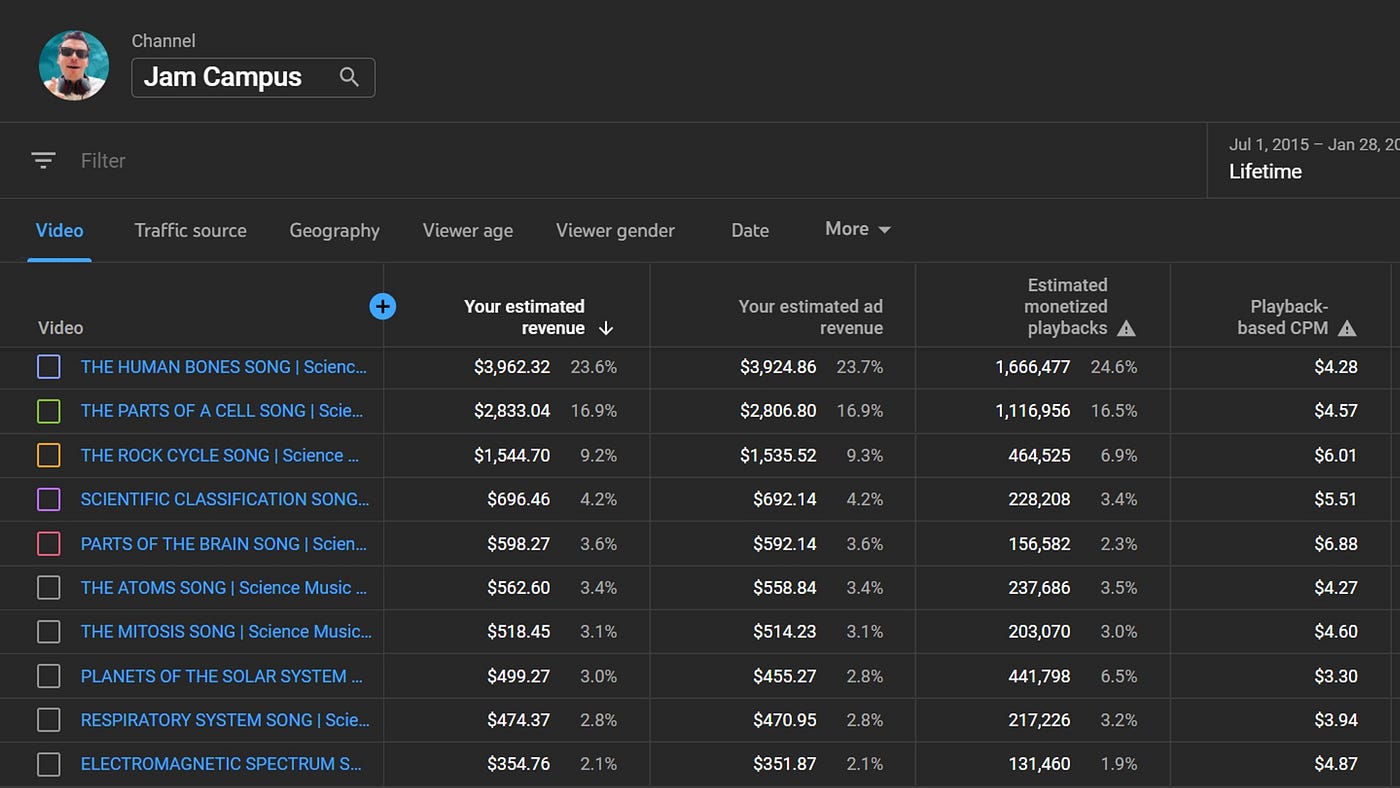
This is interesting for creators to note. If a video starts getting lots of views, analyze it so you understand why it’s performing well. Then, try to replicate it.
There is certainly value in experimentation and learning. It’s a necessary part of the creator process. But if you hit a grand slam, you should pay close attention to the exact steps and process required, so you can hit another…and another.
🔵 My top 5 videos bring in 57.5% of revenue
Just 7% of my videos (5/65) produce nearly 60% of total revenue. Wow!
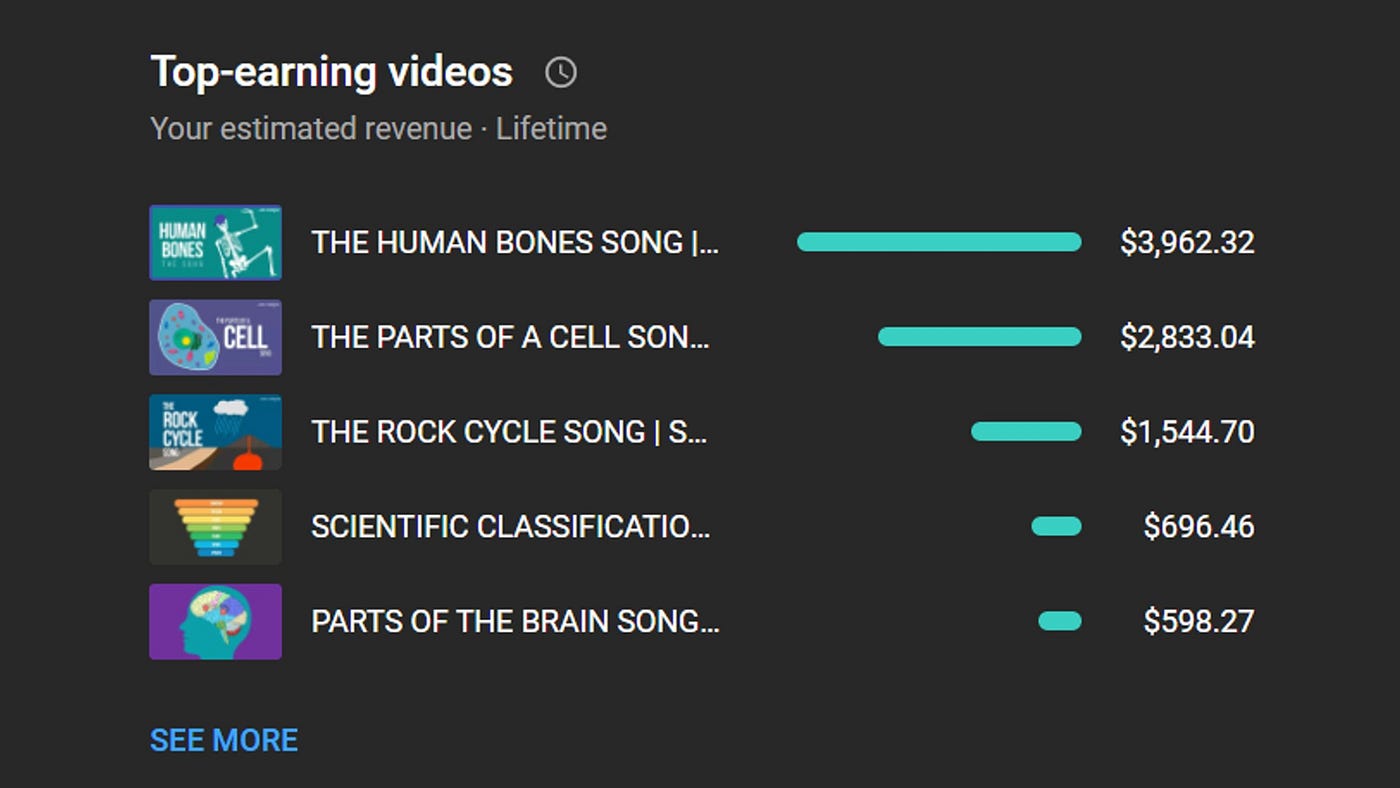
From a revenue generation perspective, this is not ideal. It’d be lower risk to have revenue evenly distributed across many videos.
With my current stats, 93% of videos are low performers. If I cared only about revenue, then the time I spent to create the bottom 93% of videos was a complete waste. 100s of hours spent editing videos that produced limited financial returns.
This solidifies the point I made above: pay attention to what content is working and create more of the same.
🔵 Revenue fluctuates based on the season
My month-to-month revenue varies. This is due to the seasonality of US public school schedules, since Jam Campus is built for a K-12 audience.
When school is in session (Fall and Spring), the channel sees record view spikes. When kids are on holiday (Winter and Summer), views drop off dramatically. Makes sense.
If you’re building a channel with the intent to make money, pay attention to the potential seasonality of your viewership. Think about your audience. And run your channel like a business. If your niche is about ‘The Best Flip-Flop Brands’, you probably won’t pull much revenue in December.
Can you build a career as a YouTuber?
Okay, you’ve heard my story. You’ve seen the numbers. Is it possible to make a living as a full-time YouTuber?
My opinion: Yes…but it takes a lot of dedication, consistency, and time.
I logged a ridiculous amount of hours building Jam Campus. And yes, it’s now generating revenue. But I stopped putting in the work. And that’s never a recipe for long-term success.
If you truly want to make a living creating YouTube content, here are some tips and thoughts to keep in mind:
1. Don’t fall for the “passive income” trap
Everyone wants to make money while they sleep. As you’ve seen above, YouTube can provide that.
But it never lasts. Passive income is a lazy, short-term strategy that will always fizzle out to non-existence.
If I continue to ignore Jam Campus, my views and revenue will eventually shrivel to a halt. My videos will age. Fresh content will rank higher in search, stealing market share and destroying all revenue potential.
If you truly want to create sustainable, long-term income on YouTube, you must be dedicated and consistent. Could you imagine yourself creating videos about this topic in 5-years? If the answer is no, go back to the drawing board and think of something else.
2. Experiment until you’ve created a high-performing video
Creating videos is a mix of art and science. When you’re first starting, your creativity is your most valuable tool.
Try new editing techniques, new video formats. All the wildest ideas you can think of. Then, just make it. Put the edit together, upload it, and see what people think.
I promise your videos will perform differently than you expect. Some of my videos I thought were going to be sure winners, have been stuck under 3K views for half a decade. Other videos I was less excited about, ended up being my highest performers.
You never know what combination of your creative genius is going to stick with people and become a high-performing video.
3. Create a standard format based on your high-performers
Once you have a few high-performing videos, you should standardize your edits and process. Customizing a new video every time is a recipe for editing burnout.
This is one reason Jam Campus failed as a long-term project. Too much customization. For a 2-minute video, I’d have to write song lyrics, build an instrumental music track, record audio, edit audio, create custom animations, and complete the video edit. Way too many steps. Way too much time.
Editing video is a long process, no matter what. But you can speed up your process by creating standards for yourself. Use the same template, background, brand, motion for every video.
Not only does this speed up your video editing, but it’s also great for your channel. Subscribers want consistency and familiarity. They expect your new videos to have a similar look and feel as the ones they loved before. Creating standards and processes is essential for your long-term YouTube brand.
4. Use TubeBuddy for topic and keyword research
TubeBuddy has been my favorite research tool since the early days of tubing. It’s an affordable, easy-to-use browser extension to help optimize your video content.
(This is not an ad or affiliate link. I just like the product.)
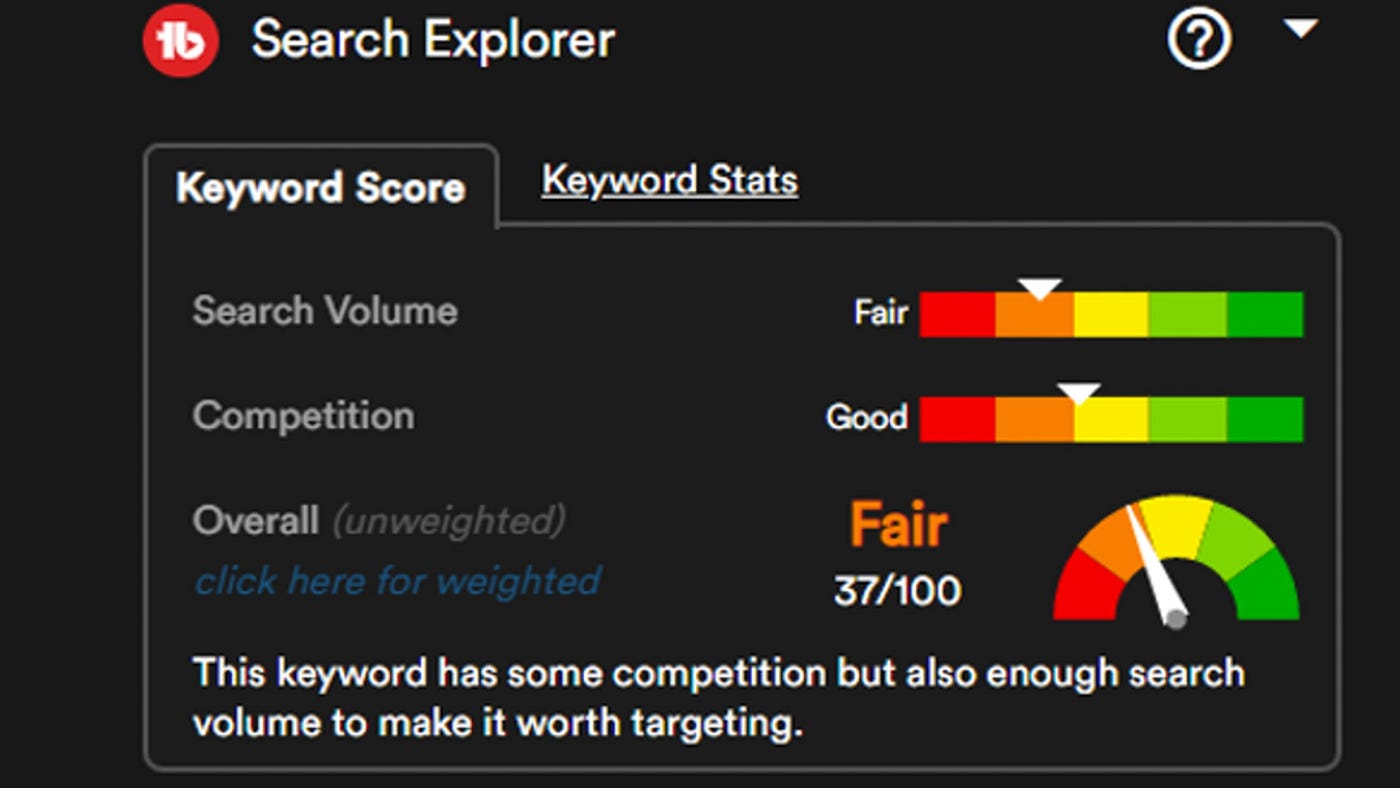
Why do research? If you want to maximize your content’s reach, you need to be strategic about the topics you choose and keywords you use.
TubeBuddy gives you keyword analytics. It rates the search volume and competition to determine if a keyword is worth targeting. Since it’s a browser extension, all your research can happen inside YouTube.
If you’re just getting started, I’d suggest targeting longer-tail keywords that have reasonably high search volume and low competition. Once you build up an audience and some authority, you can start to take on the more competitive keywords.
5. Upload consistently for at least 5-years
Building a revenue-generating YouTube channel takes time. I was consistent for 2-years. It was a good start. If I had kept going, I may have been able to turn this into a livable income. But I didn’t.
If you’re expecting to build a career on YouTube, you must be in it for the long haul. Think of it as a job and imagine yourself in 5–10 years. Do you still want to create videos for YouTube? It’s going to be a grind for a long time. Stay positive and keep adjusting your approach until you’ve hit the sweet spot.
6. Pay attention to the web3 content creation economy
Today, YouTube is king for video creators. But there are many interesting web3 projects aimed to help creators earn more money and have more control over their content.
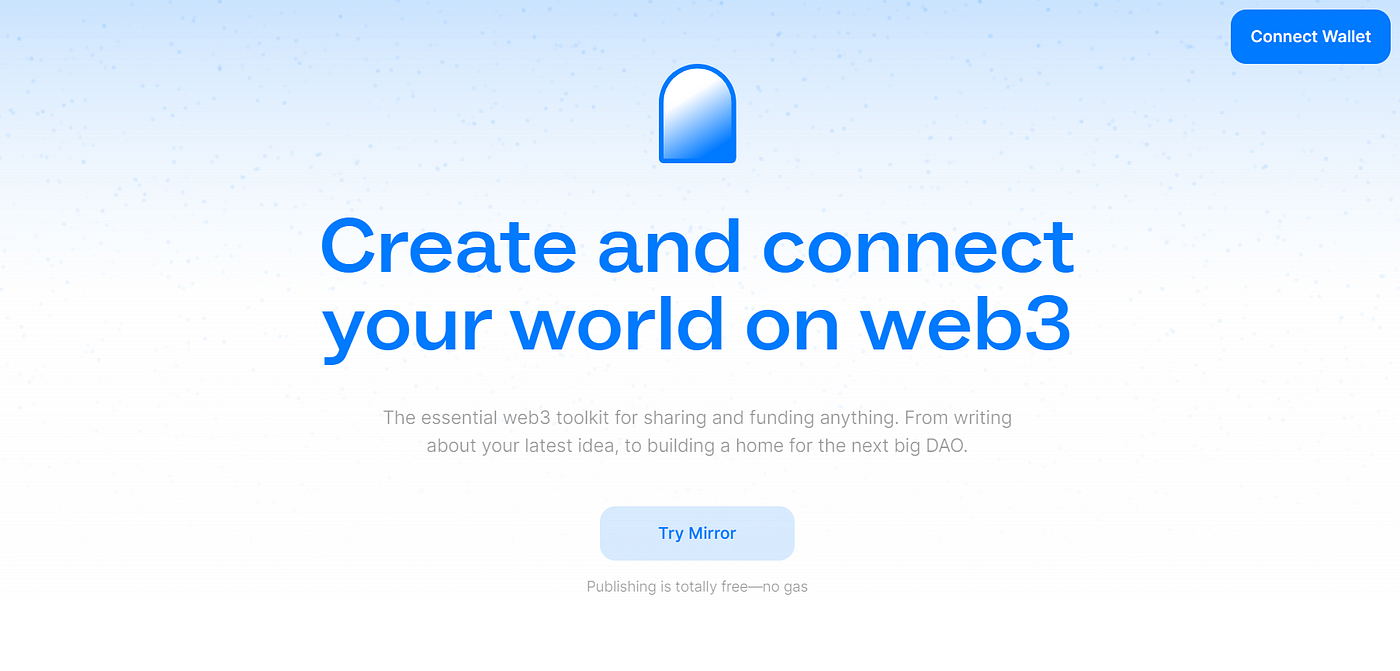
If you’re a content creator, it’s worth keeping an eye on the web3 space. There are a lot of smart, creative people building tools that may help you in the future.
Here are a few of the early tools:
- Glass.xyz: Glass is a web3 video platform where videos are owned by the people, not the platform. Videos can be collected and monetized more sustainably than web2 video platforms (like YouTube). The Glass platform is still in early stages of development. Only a handful of test creators can upload videos. Follow them on Twitter to see when it becomes available for all.
- Mirror.xyz: Mirror is a new publishing platform for writers. It’s a place for online content creators to write articles, earn money, and crowdfund their projects. Writers post articles and earn cryptocurrency when their content is supported by readers. Mirror is currently open for anyone to write and is 100% free to post articles.
Making money on YouTube is possible, but it’s not easy. It takes dedication, consistency, and time to build your brand and perfect your craft.
If you’re a passionate creator with the patience to keep going, YouTube is a solid platform to share your work and earn some cash. It’s never too late to get started.
Happy creating. 🎨